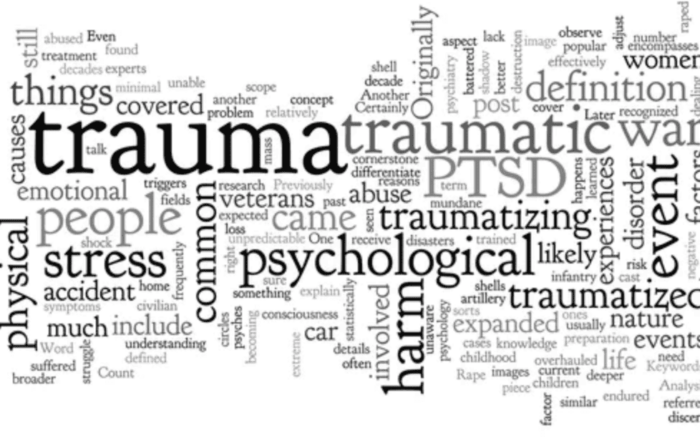Dr. Moskowitz discusses coping with anxiety related to COVID. She briefly overviews anxiety and how cognitive behavioral therapy (CBT) can be used to treat it. The speaker outlines five major aspects of CBT and how they can be modified for autism. Moskowitz reiterates the importance of understanding anxiety instead of fearing it. During the live Q&A, she discusses how to talk to kids about COVID anxieties and provides tips for tackling medical phobias and readjusting after COVID.
Handouts are online HERE
Take the knowledge quiz for this presentation HERE
In this webinar:
3:50 – What is anxiety?
6:15 – Introduction to cognitive behavioral therapy (CBT)
7:00 – How CBT treats anxiety
8:50 – Psychoeducation
12:15 – Cognitive restructuring
15:05 – Gradual exposure
17:45 – Positive reinforcement
18:46 – Relaxation
19:55 – CBT modified for autism
24:55 – Gradual exposure modified for autism
27:35 – Positive behavior support
31:20 – Live Q&A and resource page
33:14 – Talking to kids about anxiety
38:45 – Differentiating between autism and anxiety
46:55 – Phobias of medical care
49:10 – Functional communication training
54:00 – How to transition out of COVID
Anxiety and cognitive behavioral therapy
Moskowitz explains that anxiety is constructed of three parts: thoughts, behaviors, and physical feelings (3:50). She outlines cognitive behavioral therapy (CBT), which is based on the notion that these three aspects all interact with one another (5:20). CBT is the most effective treatment for anxiety in the neurotypical population, and there is mounting evidence supporting its use with some autistic individuals (7:00). The speaker outlines main components of CBT and how they can be modified for autistic individuals:
Psychoeducation
Psychoeducation focuses on educating people about the nature of anxiety. They specifically discuss the definition of anxiety, how it is a normal part of life with a specific purpose, and that anxiety only becomes an issue when one cannot cope (8:50). Moskowitz underscores externalizing anxiety or helping someone see that anxiety is separate from themselves. Psychoeducation also explains the three main components of anxiety and what treatments aim to accomplish (11:40).
Cognitive restructuring
This technique identifies anxious thoughts and how to dispute or challenge them. Moskowitz suggests walking through the likelihood of the anxious thoughts happening and how they would be able to manage in the worst-case scenario (12:15). For smaller children, the same can be achieved using simplified language and “boss back talk” toward externalized anxiety (13:50). It is essential to focus on what they can do. Moskowitz notes that psychoeducation and cognitive restructuring are not crucial parts of CBT and that non-verbal individuals or people with lower cognitive function can still participate in CBT (14:42).
Gradual exposure
Moskowitz explains that gradual exposure, or facing fears a little at a time, is the main ingredient in treating anxiety. From this, people learn that feared consequences do not come true, that anxiety isn’t dangerous, and that it’s something you can get used to (15:05). The speaker underscores that the fear of fear is often more anxiety-inducing than a phobia itself. It is, therefore, important to teach that anxiety is not dangerous and that they will get through it (16:40). The fear ladder guides the gradual confrontation of anxiety-provoking situations from easiest to hardest (17:10).
Positive reinforcement
Positive reinforcement is critical to any treatment with any person. It’s the idea of rewarding someone for doing something hard for them. Reinforcements can be social, tangible, or activity-based. The speaker emphasizes reinforcing partial successes when someone attempts a difficult task (17:45).
Relaxation
The presenter explains that relaxation is not the most important part of treating anxiety but can significantly help. The main lesson is that anxiety is not harmful and that the feelings can be managed. Moskowitz cautions against letting relaxation become a crutch in handling anxiety (18:46).
Modifications to CBT for autistic individuals
The most significant difference in CBT modified for autism is incorporating special interests. These interests work better with autistic patients because their love of the special interests can supersede anxiety and fear (21:10). Other differences include increased structure and predictability, extra modules for difficulties specific to autism, increased focus on generalization, and increased parental involvement (19:55). Moskowitz provides examples of visual teaching strategies that match an individual’s developmental level as they are used in cognitive restructuring and psychoeducation (22:11). For autistic people with low cognitive ability, pairing anxiety-provoking stimuli with highly positive stimuli often helps with overcoming anxiety (26:00). The speaker gives various examples of modified CBT treatments.
Positive behavior support prevention strategies
The presenter discusses positive behavior supports like increasing predictability and providing choices. These offer individuals more control of their own situations, and so help with anxiety (27:35). She highlights video priming as a great way to increase predictability and provides examples for each support (30:15).
Live Q&A
Moskowitz discusses what to do if your child’s fear of being exposed to COVID increases as they learn more information. She suggests being honest with the kids and giving them age-appropriate information so they have some idea about what is going on (33:14). If kids are asking the same anxiety-related questions over long periods, the speaker suggests setting a specific time of day to discuss those topics (35:10). She considers how to differentiate between repetitive behaviors/questions that are part of autism and those that are rooted in anxiety (38:45). For example, if the questions are a function of wanting social interaction, setting one time per day to talk about that topic wouldn’t be the correct treatment (40:40). The speaker notes that kids should be “earning points” or receiving positive reinforcement for not asking repetitive questions as well (43:10).
Moskowitz provides helpful tips for medical phobias like increasing predictability and offering choices (46:55). She notes that functional communication training is critical in teaching kids how to ask for a break and that they can ask (49:10). When pairing positive stimuli doesn’t help, Moskowitz suggests thinking more about what the most powerful thing would be – perhaps an interest that was so intrusive it was previously removed (51:08).
Transitioning out of pandemic life will be difficult for everyone. Research shows that after massive natural disasters, most people readjust (56:24). However, gradual readjustment and transitions generally see the best results. Therefore, she suggests that changes to pandemic routines be done slowly. She advises moving bedtimes up ten minutes daily or minimizing video game playing similarly (57:53).
About the speaker:
 Lauren Moskowitz, Ph.D. is an Assistant Professor of Psychology at St. John’s University and a core member of the School Psychology (Psy.D. and M.S.) programs. She earned her B.S. from Cornell University and her M.A. and Ph.D. in Clinical Psychology from Stony Brook University. Dr. Moskowitz completed her clinical internship at NYU Child Study Center and Bellevue Hospital and her postdoctoral fellowship at NYU Child Study Center. She is on the editorial board of the Journal of Positive Behavior Interventions(JPBI), serves as a peer reviewer for many other leading journals in the field, and was Co-Chair of the Autism Spectrum and Developmental Disabilities (ASDD) SIG for the Association for Behavioral and Cognitive Therapies (ABCT) from 2016-2018.
Lauren Moskowitz, Ph.D. is an Assistant Professor of Psychology at St. John’s University and a core member of the School Psychology (Psy.D. and M.S.) programs. She earned her B.S. from Cornell University and her M.A. and Ph.D. in Clinical Psychology from Stony Brook University. Dr. Moskowitz completed her clinical internship at NYU Child Study Center and Bellevue Hospital and her postdoctoral fellowship at NYU Child Study Center. She is on the editorial board of the Journal of Positive Behavior Interventions(JPBI), serves as a peer reviewer for many other leading journals in the field, and was Co-Chair of the Autism Spectrum and Developmental Disabilities (ASDD) SIG for the Association for Behavioral and Cognitive Therapies (ABCT) from 2016-2018.
Take the knowledge quiz
Can’t see the quiz below? Take it online HERE
Learn More:
Watch Dr. Moskowitz’s previous presentation “Behavioral Strategies for Addressing Anxiety” to learn evidence-based approaches for supporting individuals with ASD who are experiencing behavioral challenges.
Treating Autism and Related Conditions in Adults
1 pm Eastern time, Wednesday, February 26, 2025 ARI board member Robert Hendren, DO, discusses approaches for appropriately supporting symptoms of Autism and related conditions in adults. The
Wellbeing Wins: Integrating Positive Psychology into the Autism Community
Free webinar at 1 p.m. Eastern time (US), Wednesday, September 25, 2024 About the speaker: Patricia Wright, PhD, MPH, is Executive Director of Proof Positive: Autism Wellbeing Alliance.
Autism and Trauma
Dr. Connor Kerns discusses research on the prevalence, sources, and impact of traumatic experiences in autistic people. She underscores the prevalence of childhood adversity in autistic groups and highlights the need for
“School distress” rates are elevated among those with autism
Rates of “school distress”—or significant emotional distress related to attending school—are significantly elevated in children with autism spectrum disorders (ASD), according to a new study from the United Kingdom. Sophie Connolly and
“School distress” rates are elevated among those with autism
Rates of “school distress”—or significant emotional distress related to attending school—are significantly elevated in children with autism spectrum disorders (ASD), according to a new study from the United Kingdom.Sophie Connolly and colleagues
Sexual Victimization in Autism
In this article: Chronic maltreatment and sexual victimization Trauma and quality of life Risk Factors What can we do? A safer future Resources Despite evidence to the contrary, misperceptions of autistic





